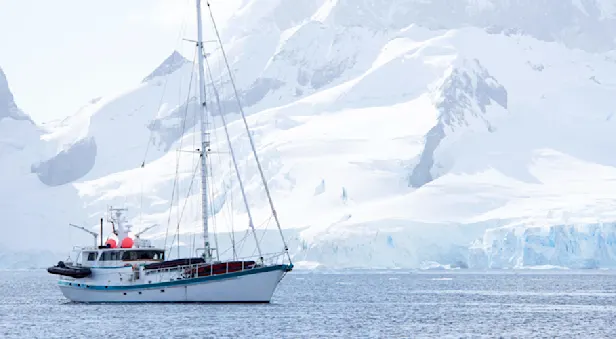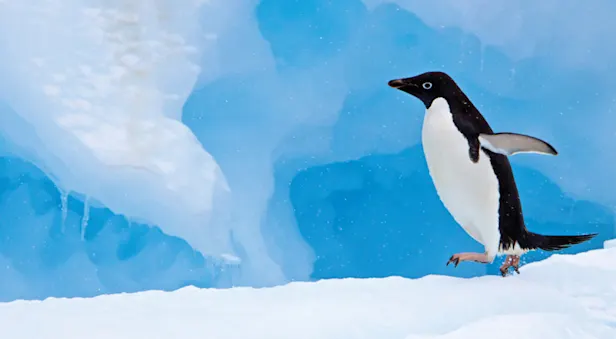Fur Seal Facts | Antarctica Wildlife Guide
Male fur seals grow to a much larger size than the females, which is also typical of other eared seals, such as sea lions. Mature males can reach a weight of 400 pounds, and their coats range from silver to olive gray with brown undersides. Females have lighter undersides and can weigh up to 110 pounds. Males have a thick mane of insulating guard hairs on their neck, shoulders and crest.
Fur seals are found along the coastline, favoring sheltered rocky beaches as their breeding grounds. Males start arriving in September and October, battling with one another over beach territories. The contentious bulls are highly defensive, and these fights continue, as cows begin arriving in late November. Having reached the beach, they give birth in two to four days’ time. One week after bearing young, females begin breeding and harems, maintained by bulls, are formed.
In mid-January, the fur seals disperse, and bulls retreat to the sea to feed for short periods at a time. Between late January and early March, the fur seals molt. Cows with their pups depart from the sheltered beaches in April, though juvenile males have been known to remain until the end of June.
The Antarctic fur seals dive to about 150 feet and feed mainly on krill. However, they also consume fish, squid and even penguins. During the winter, they migrate north to warmer waters. Individuals have ranged as far north as the South Island of New Zealand.
Mating colonies of Antarctic seals were discovered in South Georgia in the late 1700s. By the end of the 18th century, 30 vessels from England, Russia and the United States were harvesting hundreds of thousands of skins per year. The animals were soon almost wiped out, and the sealers had to search farther and farther afield for other populations. This search led to the discovery of the continent of Antarctica.
It was thought that the South Georgia fur seals had become extinct, but in 1933 a small colony was found to have survived on Bird Island in South Georgia. From this meager beginning, and thanks to protective legislation, the population has increased massively and led to repopulation of other sites in the South Orkney, South Sandwich and the South Shetland islands. There now may be more than 3 million fur seals on South Georgia, and there is consideration of whether to control this explosive population growth.
See Fur Seals on These Antarctic Expeditions

Sailing Antarctica: A Polar Wildlife Expedition
Those with a passion for true adventure won't find a more exhilarating thrill than exploring Antarctica on an intimate voyage by private motorsailer—for just seven guests! Kayak and camp on the ice, too.



































